
SVALBARD ISLANDS, NORWAY: Located about 1,000 kilometres (621 mi) from the North Pole, the Norwegian-administered Svalbard Islands are packed with adventure, all year round. Start your trip in the main settlement of Longyearbyen where it is easy to spend a few days with the local residents while planning trips outside into the Arctic wilderness. In winter, the Arctic gets bitterly cold which is an adventure in itself. Get on a snowmobile, dogsled, cross-country skis, snowshoes, or a snow buggy and head into the unknown.
1. Top-of-the-World Feeling
There is nothing on planet earth that beats the feeling of “I’m on top of the world”. I first had that special feeling when I was on Norway’s Lofoten Islands, 500 kilometres (311 mi) south of Svalbard. On the Lofoten Islands, I also experienced the never-ending “white nights” when the sun is high up and bright 24 hours a day.
Here on the Svalbard Islands, the sun hardly peeks out above the horizon during the day in winter. At night, it goes down to make way for the Northern Lights (Aurora Borealis) to paint the skies in soft hues of green and blue. The silence of the never-ending snow-covered landscape is so surreal.
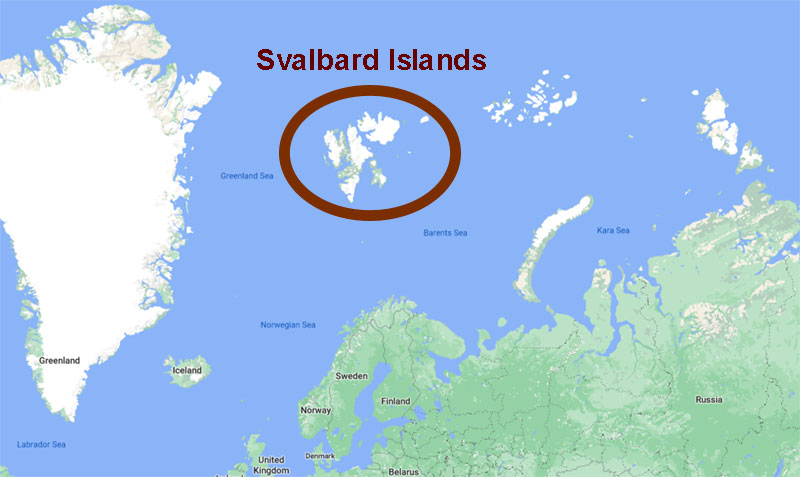
2. Polar Bear Spotting
There are an estimated 3,000 polar bears (which by far exceeds the human population) roaming the Svalbard archipelago and the surrounding Arctic Ocean and the Barents Sea.
While humans are constantly reminded to be prepared for an encounter with the bears anywhere in Svalbard, they are not easy to spot. They are endangered and protected by law, so there are no polar bear safaris. Head out by snowmobile and dogsled and hope you can spot them, without becoming their lunch.

3. Dog Sledding
While dog sledding is the more adventurous, albeit risky way to find the polar bears, it is also one of the most thrilling adventures you can take in this snow and ice-covered landscape. If you love dogs, in particular huskies, then this is an adventure you should not miss.
The dogs are very loving of their human visitors, and enjoy the ride as much as their guests. Once harnessing is completed, you’d better quickly jump in the bucket before the dogs leave without you. Enjoy the ride and stay upright.
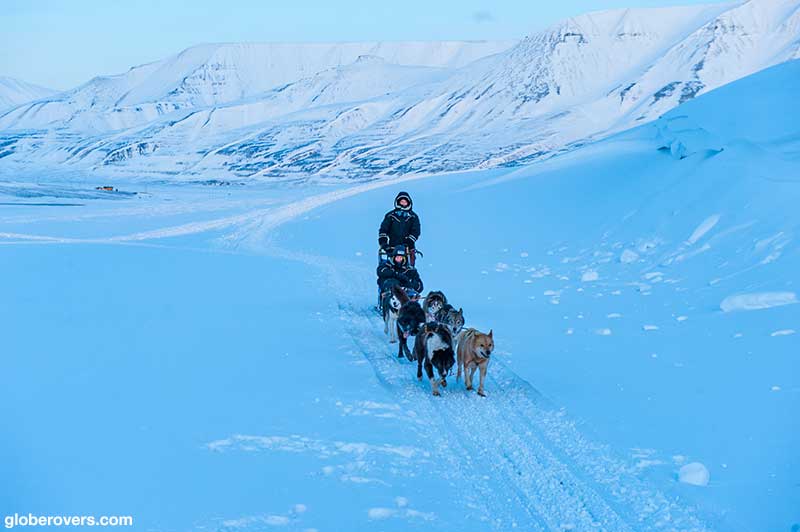
4. Snowmobiling
One of the safest ways to search for the bears is by snowmobile. At least, your getaway vehicle is faster and more reliable than the huskies and their sled.
Tour operators from Longyearbyen provide a heavy-duty snowmobile suit, boots, mittens, helmet, goggles and balaclava. In winter it can be bitterly cold when driving on the snowmobile and any exposed skin will freeze in a few seconds. Routes include a 100 km trip to the east coast where bears often congregate on the drifting sea ice in search of leopard seals.
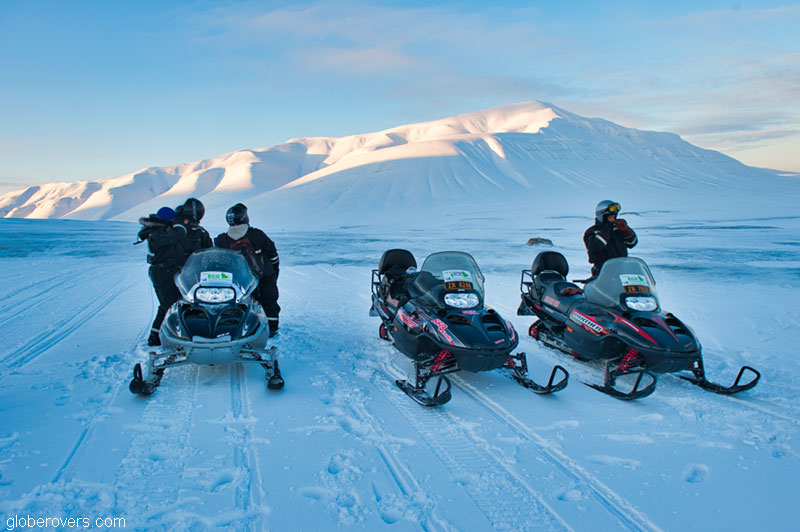
5. Ice Caving
Another unforgettable and unrivalled experience of Svalbard is getting close-up to the glaciers. Svalbard is blessed with some of the most impressive glaciers, though in winter you can walk on a glacier without knowing it, as everything is covered in thick snow.
If you come across a hole in the snow, with a ladder leading into the abyss, your adventure starts! Down below, follow the meltwater channels through the moraine. Under tons of ice and snow, you will be surrounded by a landscape consisting of ice and stalactites.
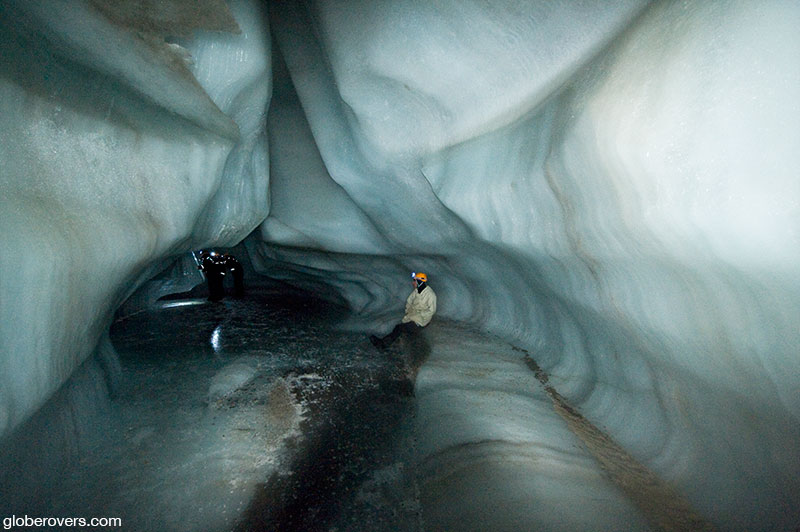
6. Northern Lights
Seeing the Northern Lights (aurora borealis) is on many travellers’ bucket lists. During the polar night from November to February, there is no daylight in Svalbard, which makes it the ideal location to see these lights filling the polar skies.
Svalbard is one of the few places on earth where you can see the Northern Lights during daytime hours, when there is no sunlight from November to February. In October and February you can enjoy the blue Arctic light during the day and the Northern Lights at night. Amazing!
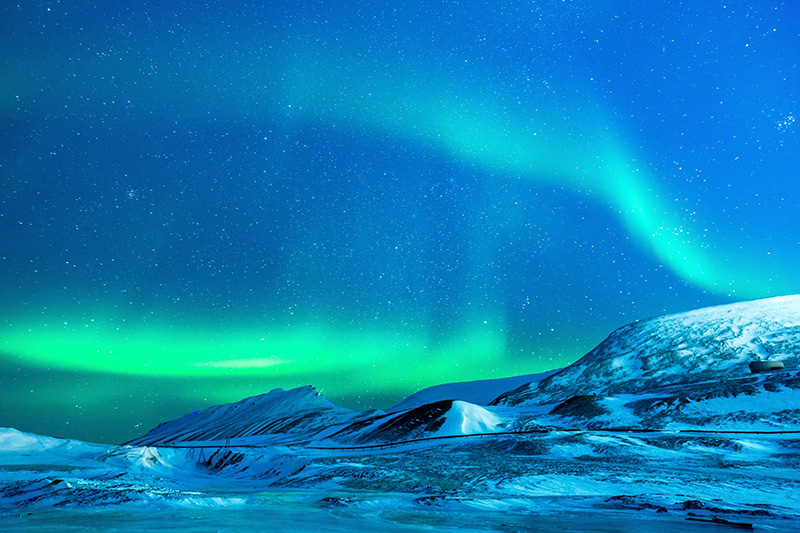
7. Glacier Hiking
Svalbard is covered by eight ice caps, and several glaciers. Some operators out of Longyearbyen offer hiking on the heavily crevassed Nordenskiöld Glacier. Here you can hike, while roped to your buddies, up and down the glacier, staring down the massive cracks, and enjoying the shiny glacier surface.
Other ways to see the glaciers are to go where they are protruding from the snow, descending into the glacier caves, or by kayaking in icy waters to get up close. All are spectacular!

8. The Noorderlicht
Constructed in 1910 for the German Navy fleet, the 46 metre (151 ft) long steel-hulled Noorderlicht sailboat sits solidly frozen in Templefjord Bay during the winter months.
Here she peacefully serves as base-camp accommodation for Arctic voyages, and as a guesthouse for those who want to see the polar bears. Arrive by dog sled or snowmobile and stay a few nights. If you are lucky, you will see the bears from your window. During summer, the boat cruises around the islands and offers a perfect way to see the bears on ice-covered areas.
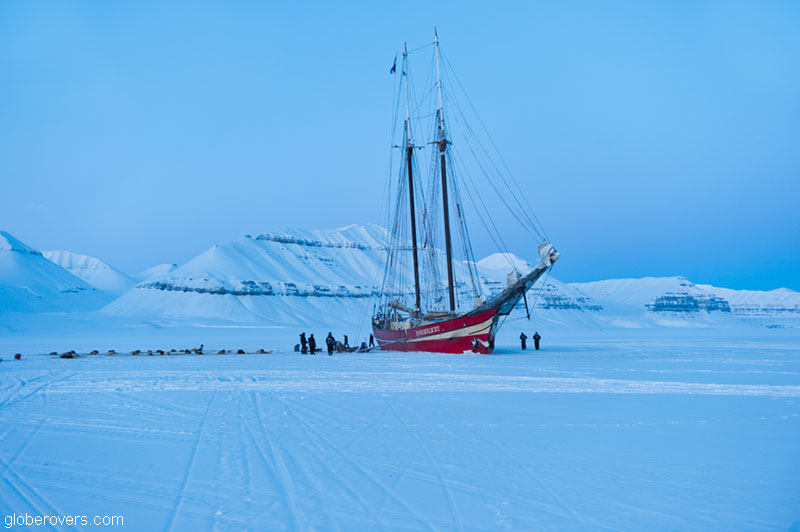
9. Longyearbyen
Longyearbyen is a lively, cosmopolitan Arctic settlement on Spitsbergen Island, the main centre of the Svalbard Islands. This is where many of Svalbard’s residents live, with most of them being scientists, nature enthusiasts, and those in service industries such as shops, travel operators, and a few others.
Longyearbyen serves as gateway to the High Arctic wilderness. While the town is very small, it provides everything needed by the residents and the small but growing tourist population.
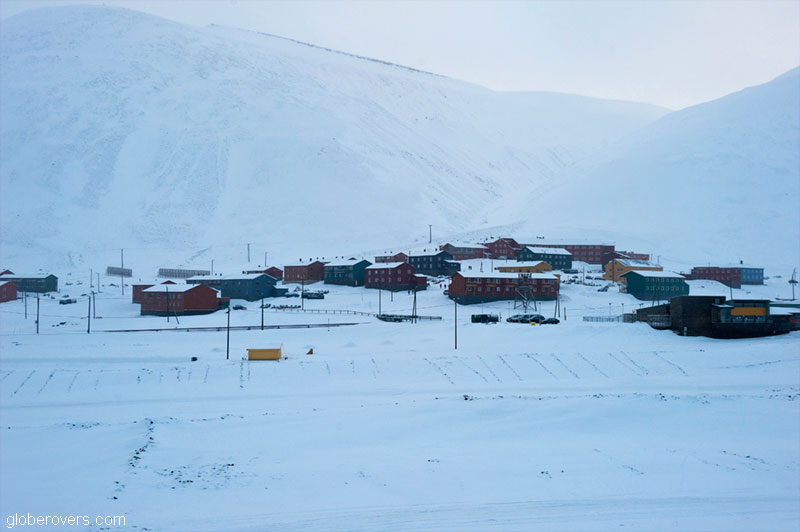
10. Summer Fun
While visiting the Svalbard Islands during the winter months is an adventure you won’t get anywhere else, summers offer a very different kind of experience.
During summer, daylight is 24 hours long, so you can explore the islands non-stop. This is also the best time to spot polar bears, as there is less snow, and icy areas where they can hunt for seals. With less snow coverage, more of the glaciers are visible than in winter when everything is covered in snow. Summer is also the time to see a wider variety of wildlife.
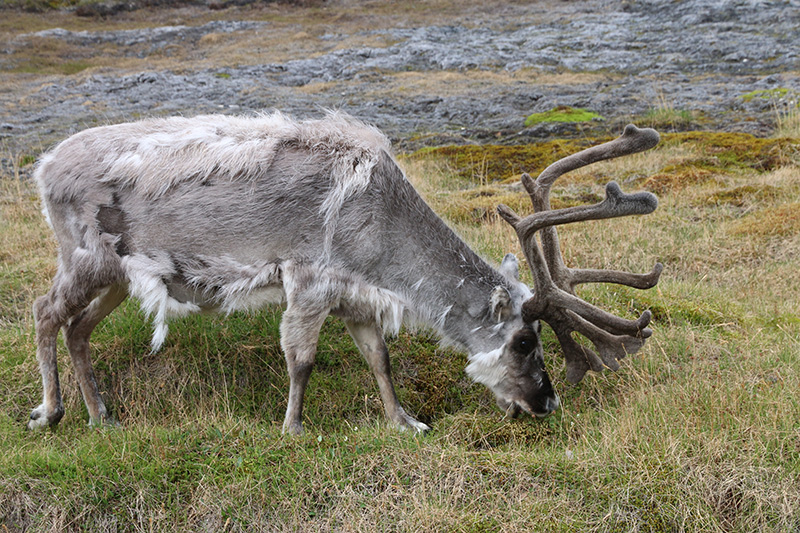
☛ Read more: Exploring Svalbard – Gateway to the North Pole
☛ Read more: Dogsledding on the Svalbard Islands



Blog post and photos by Peter who has been travelling almost full-time since 2005 and has been to over 122 countries. He visited several countries, such as Japan, more than 20 times. Peter is Editor-in-Chief and Publisher of GlobeRovers Magazine, an independent travel magazine focused on intrepid destinations.
